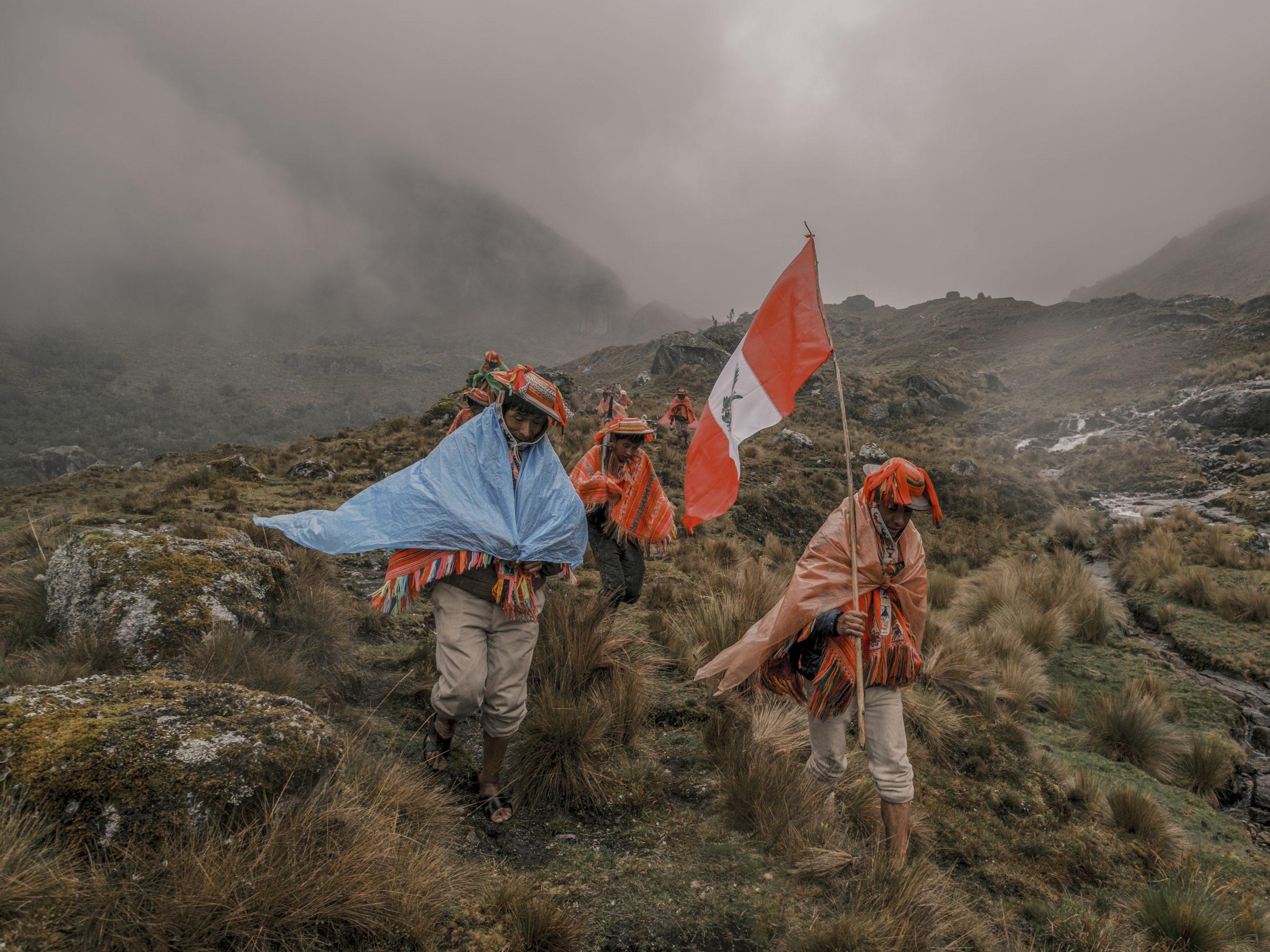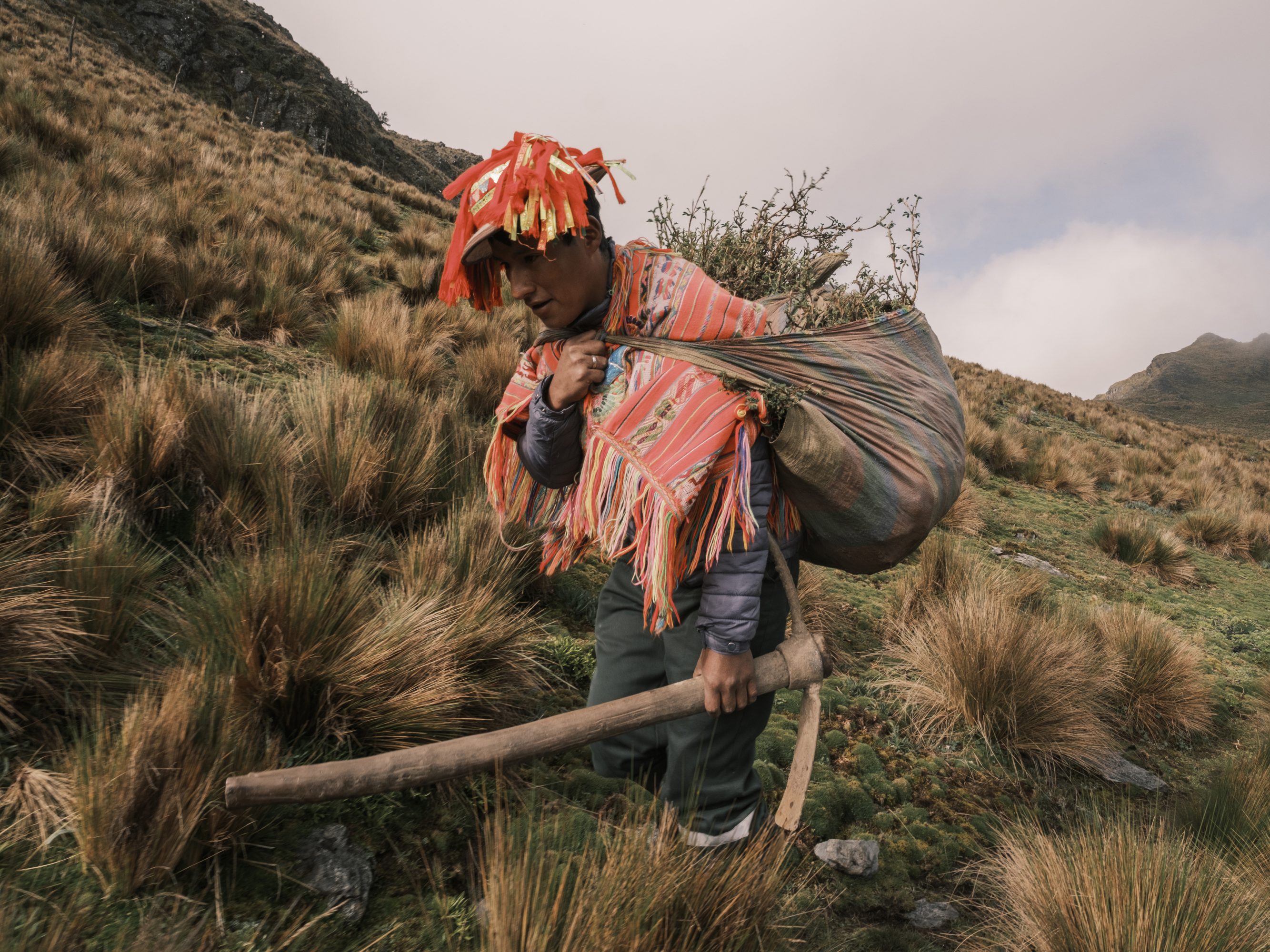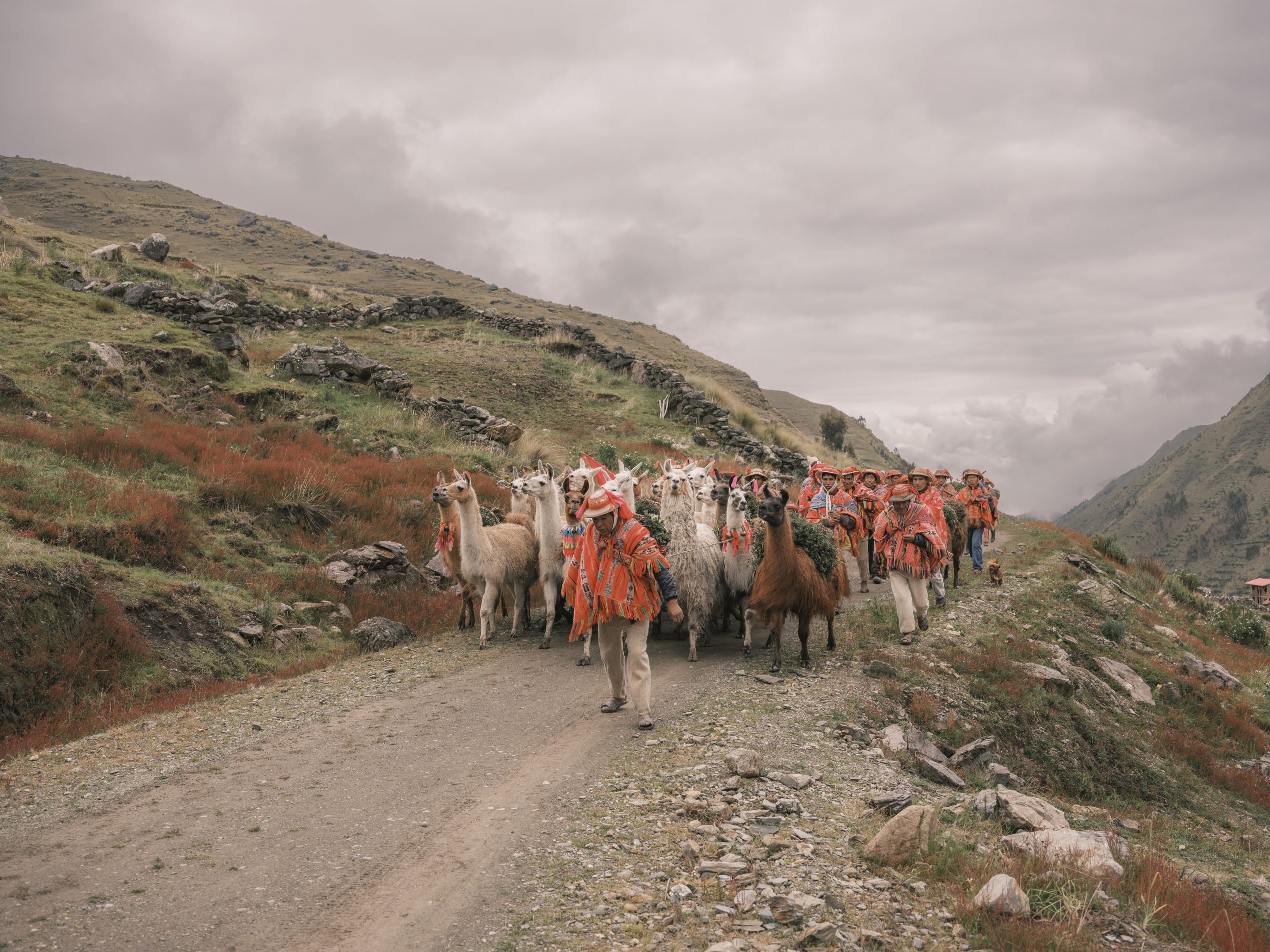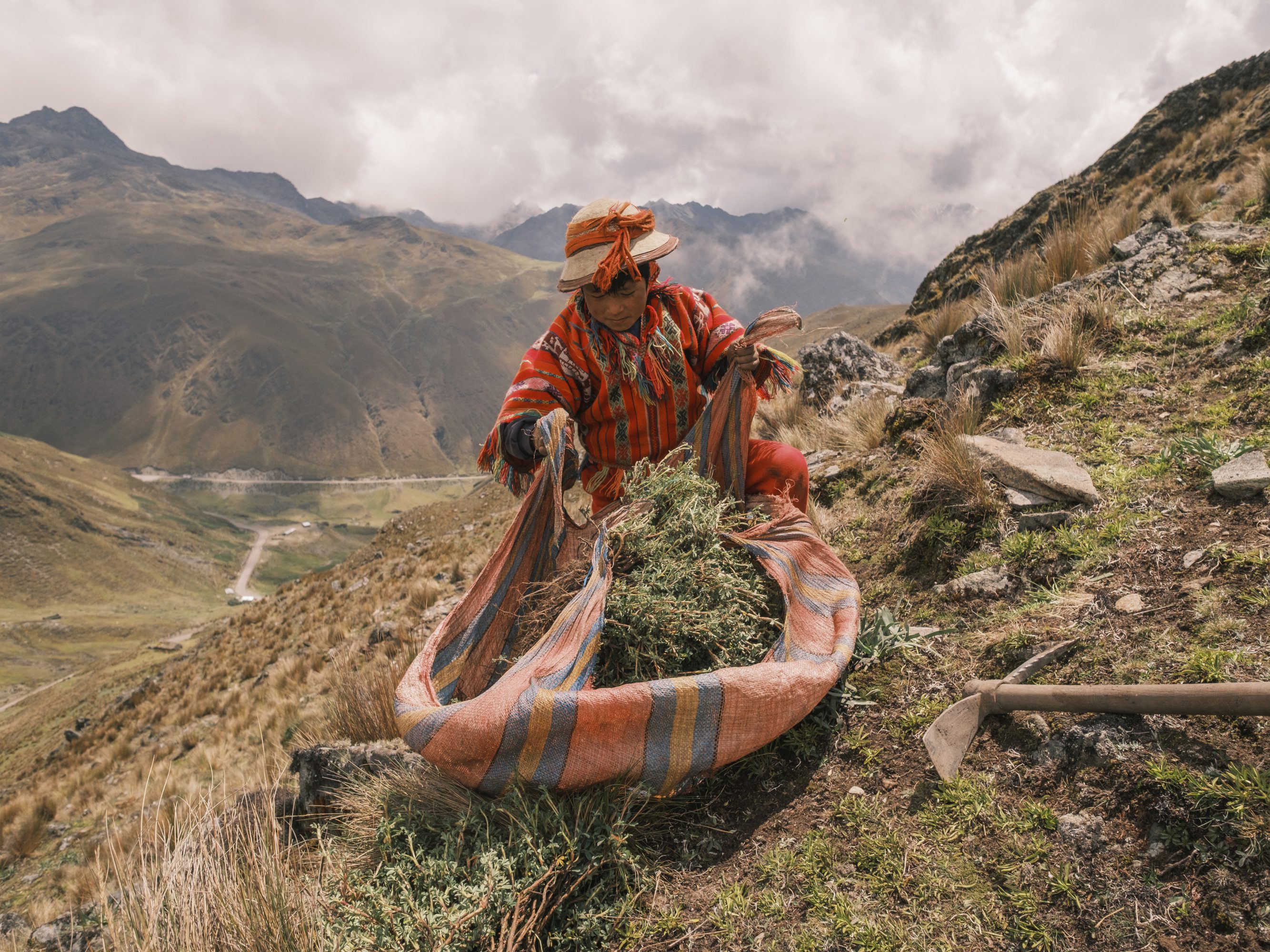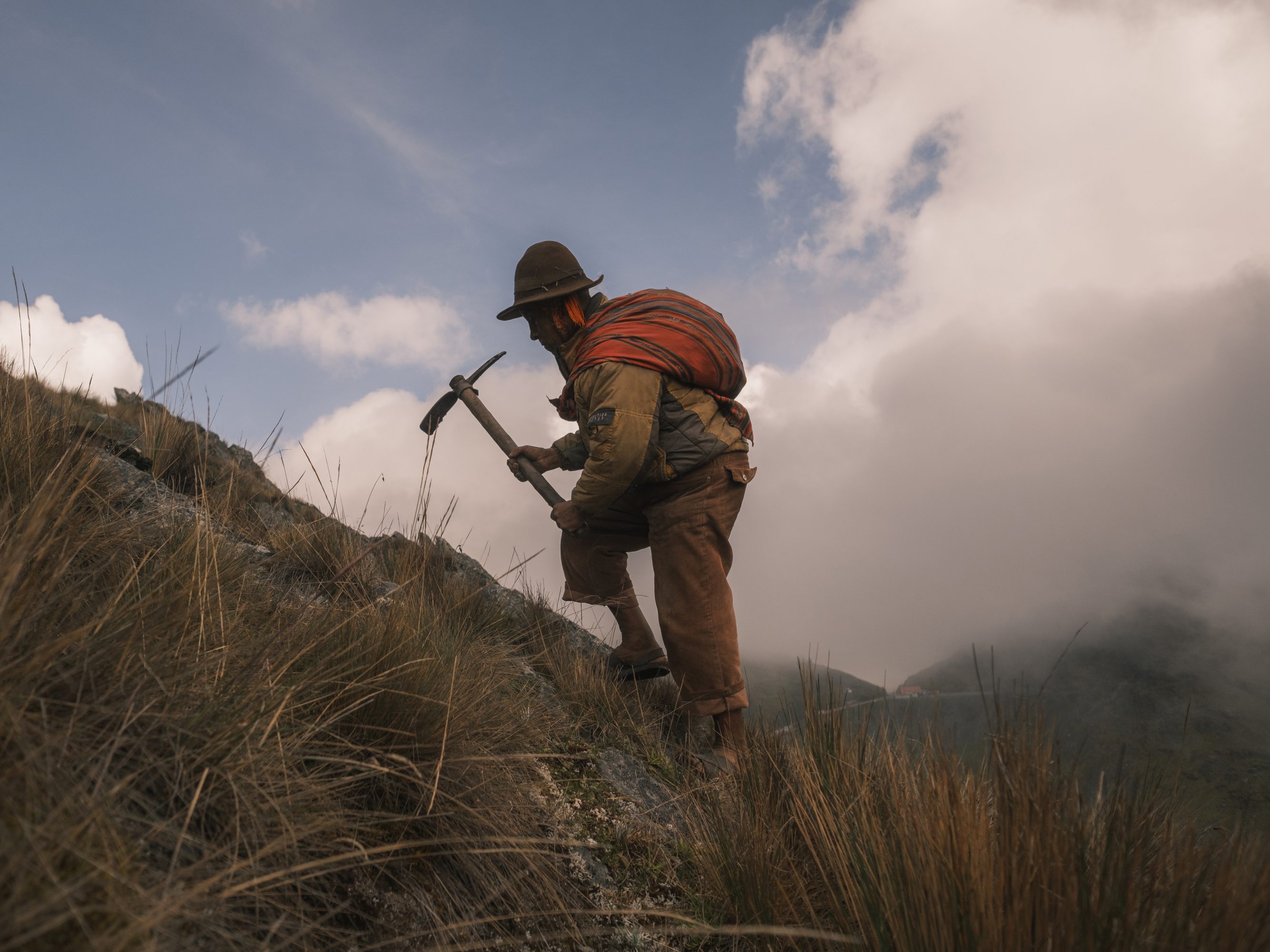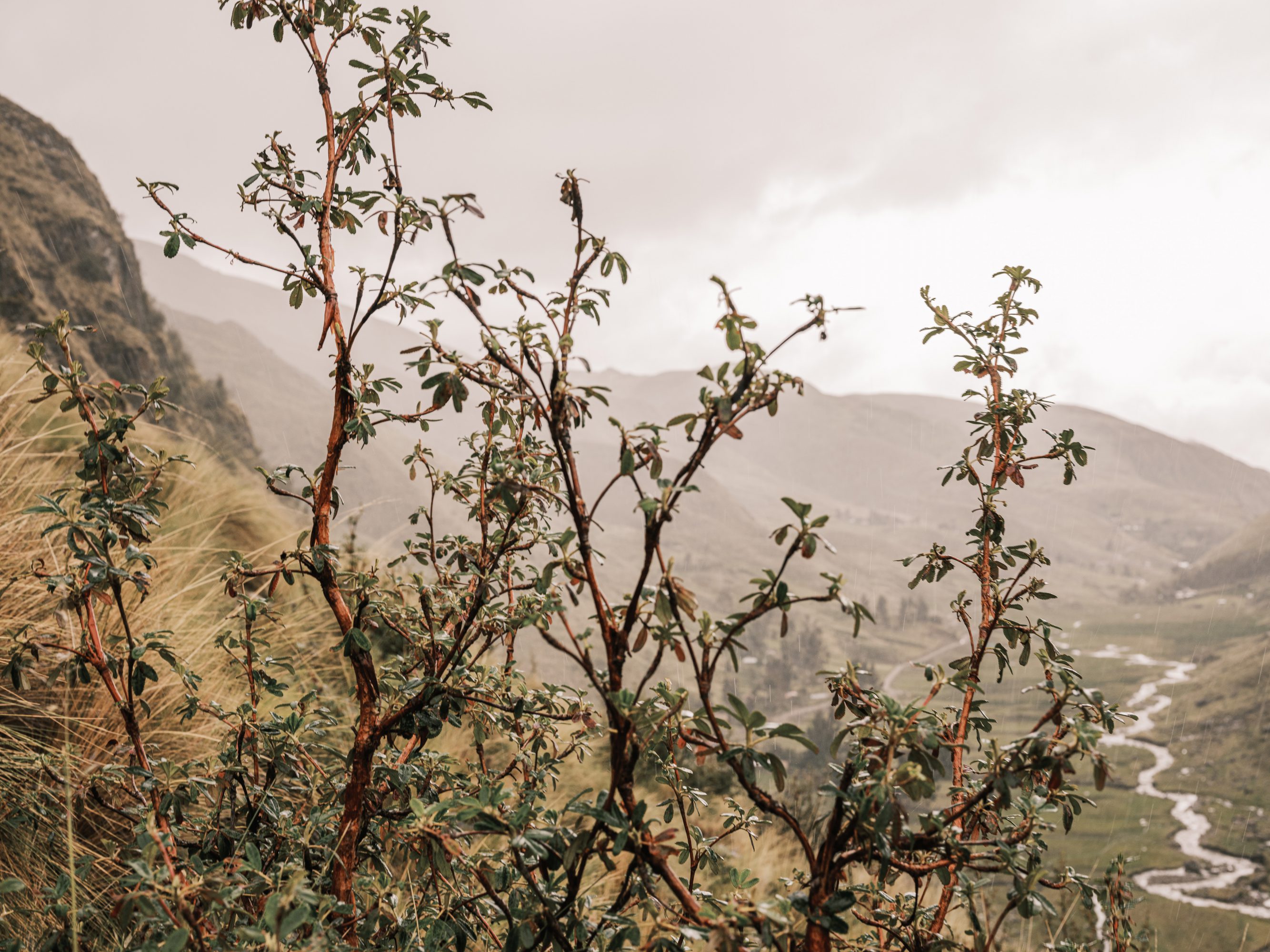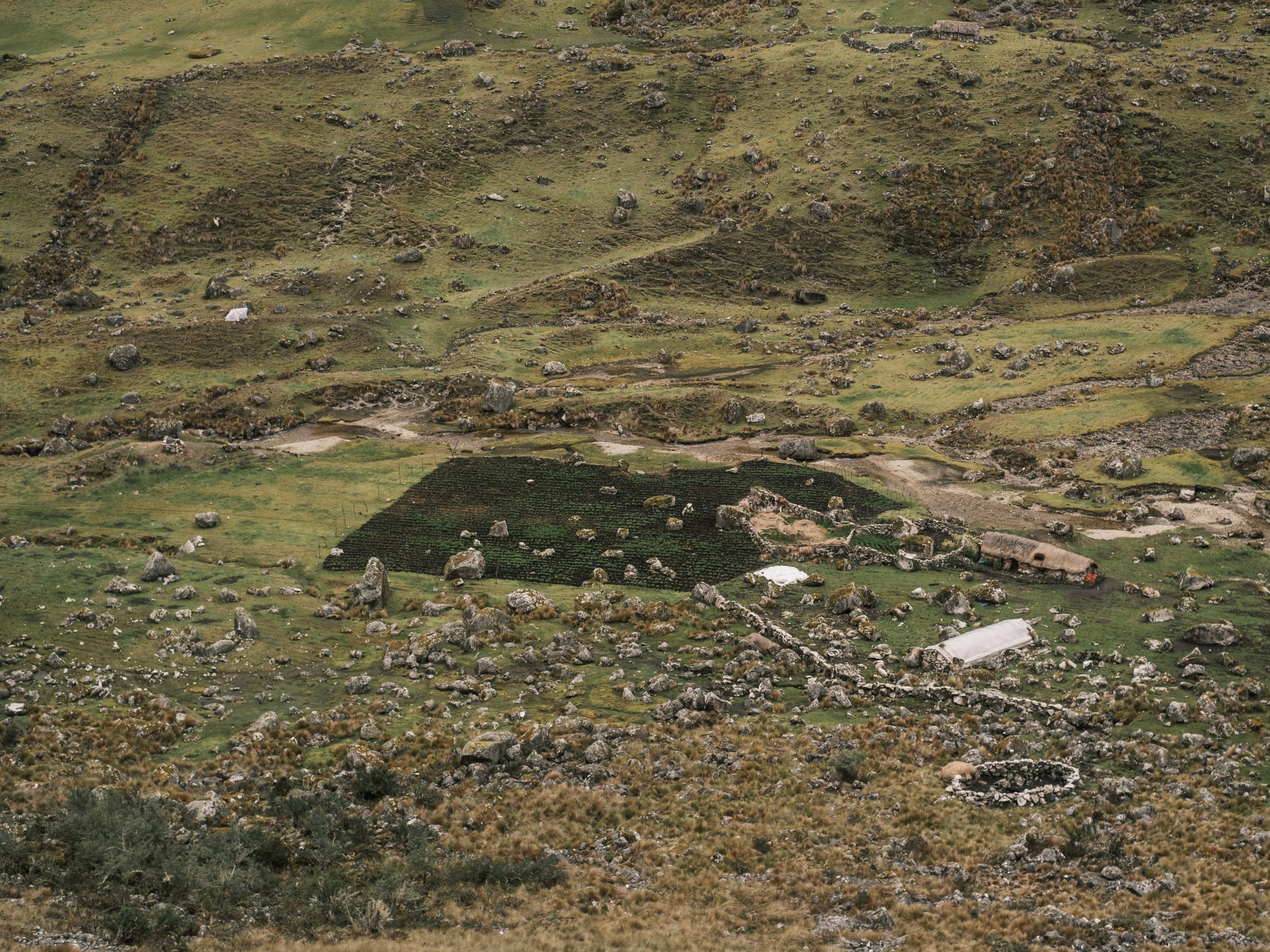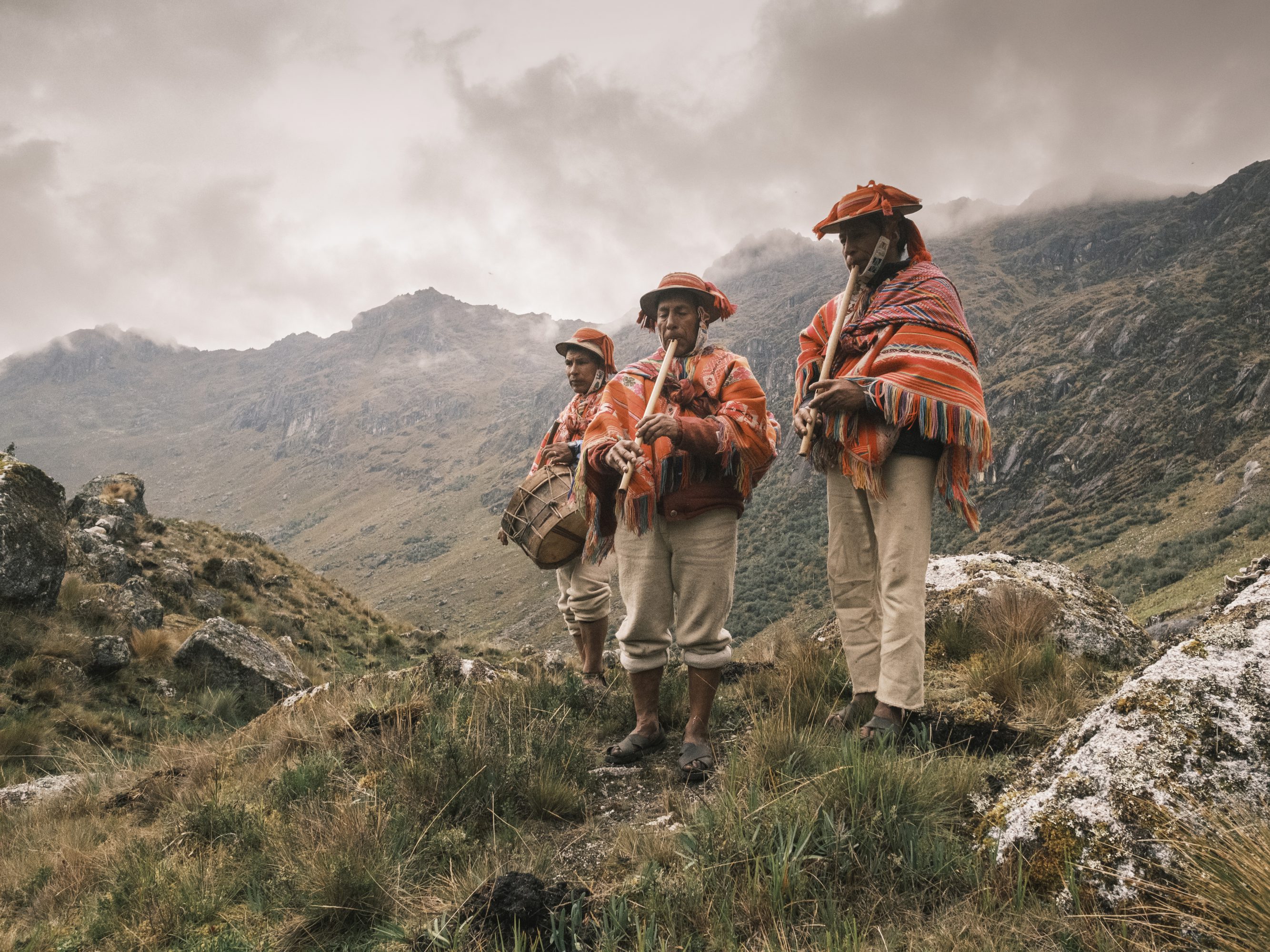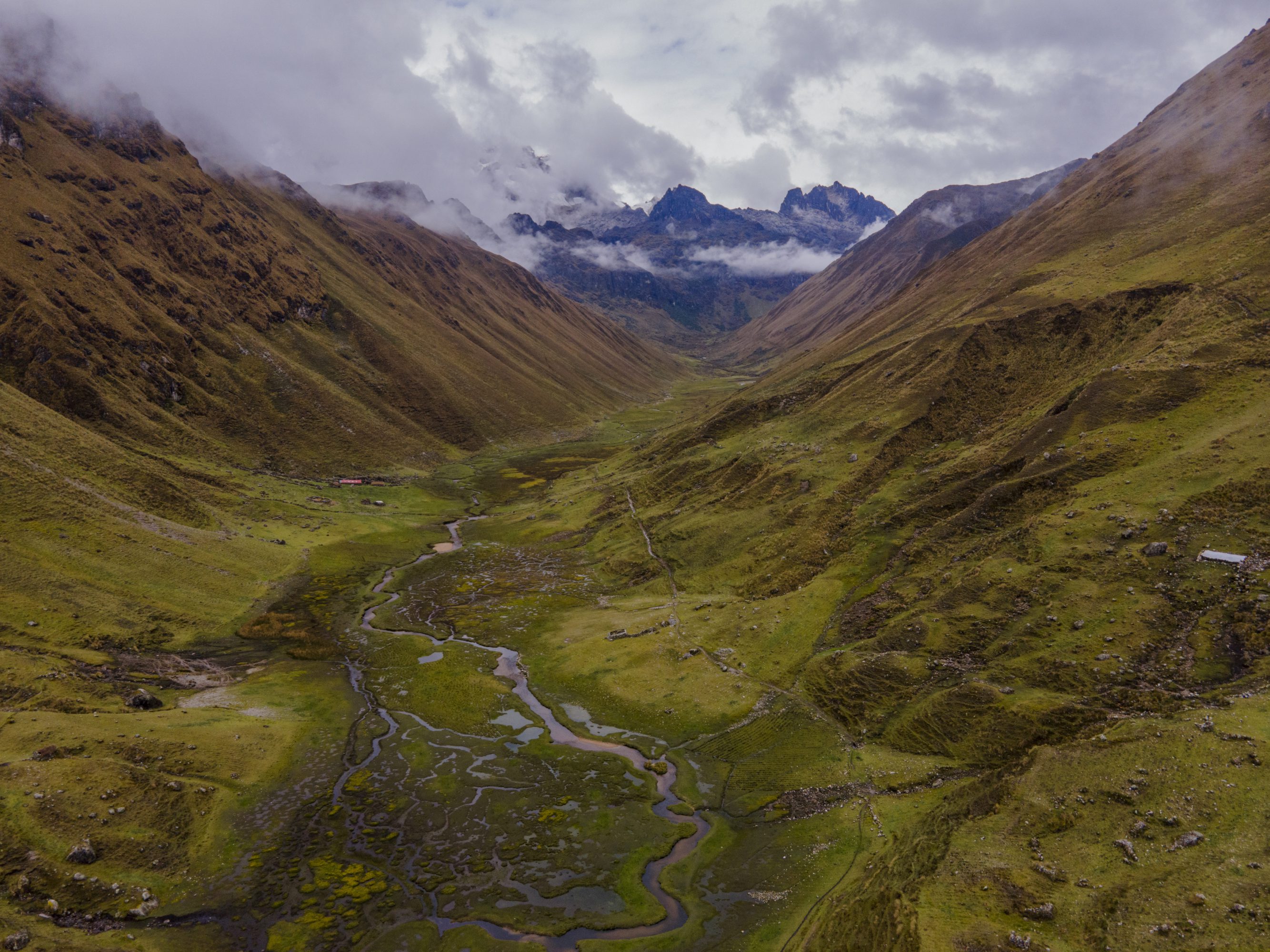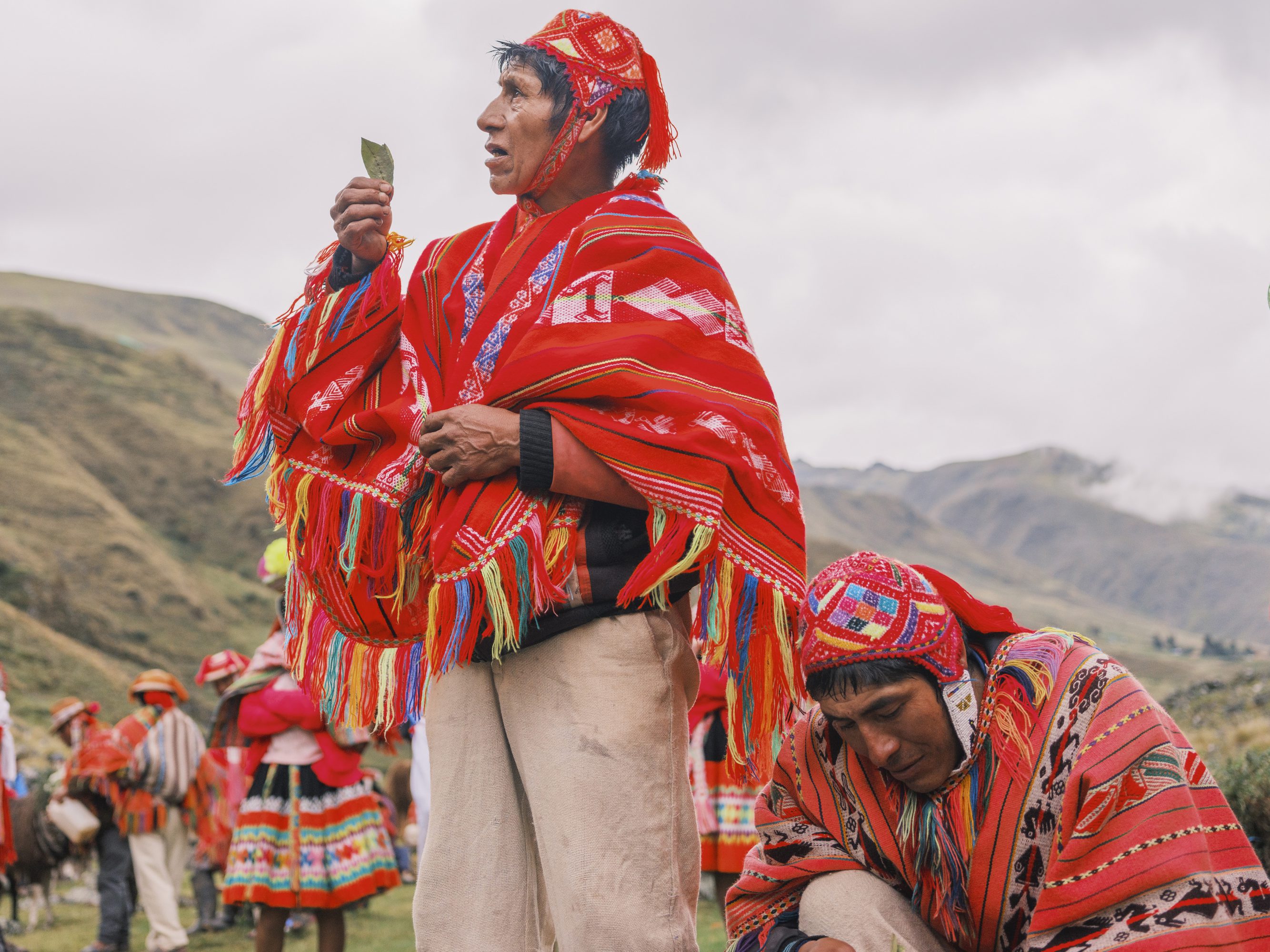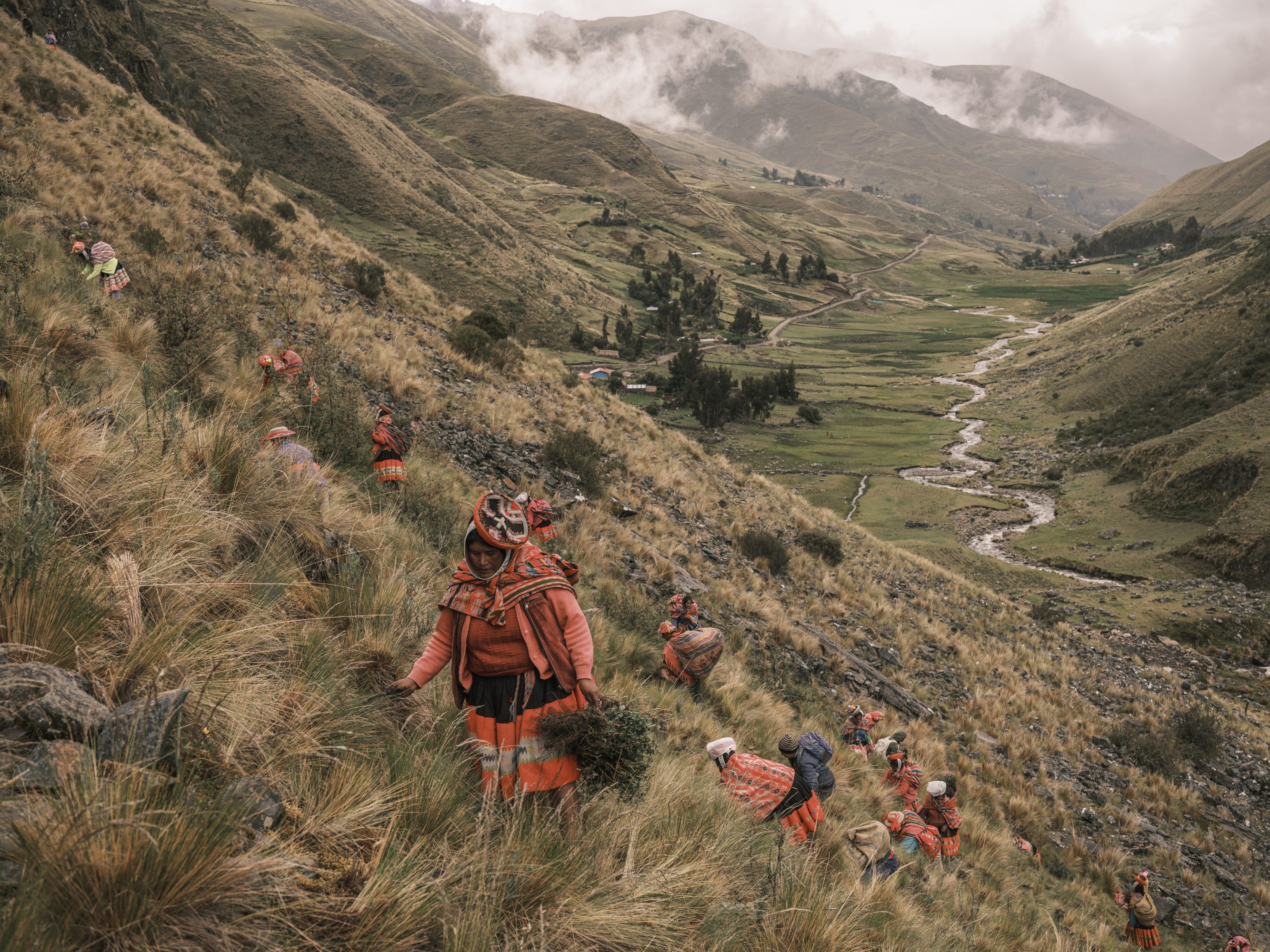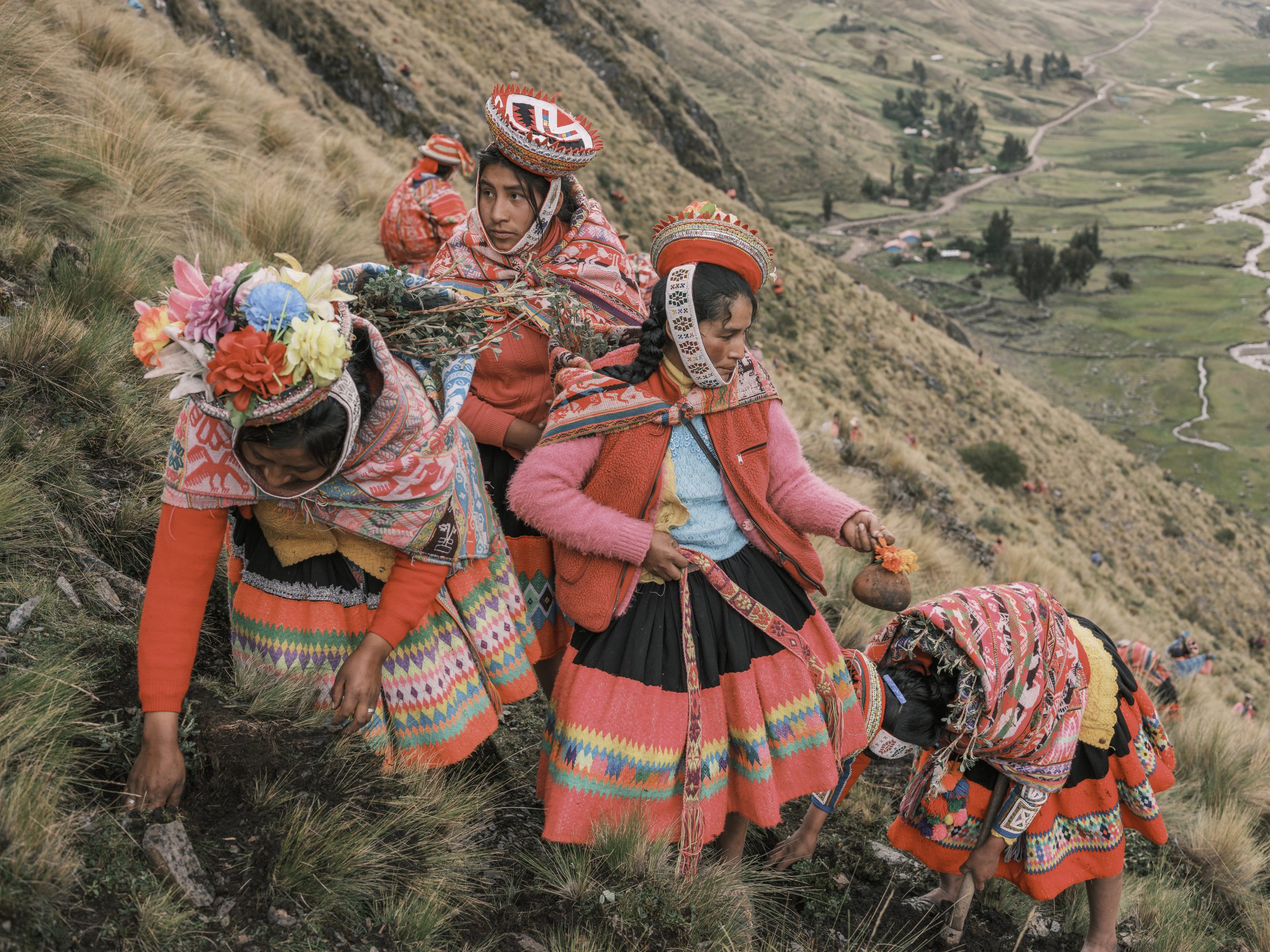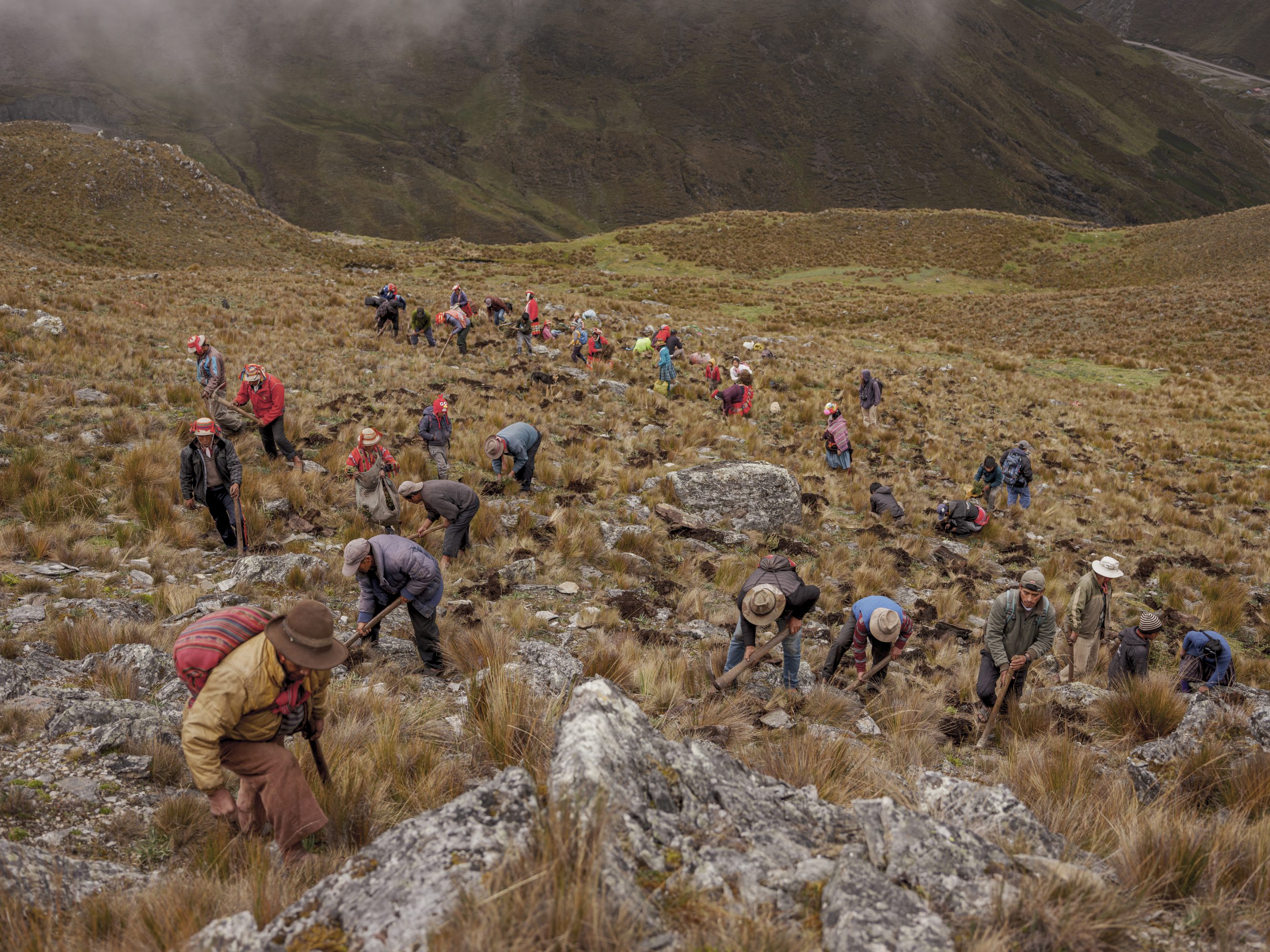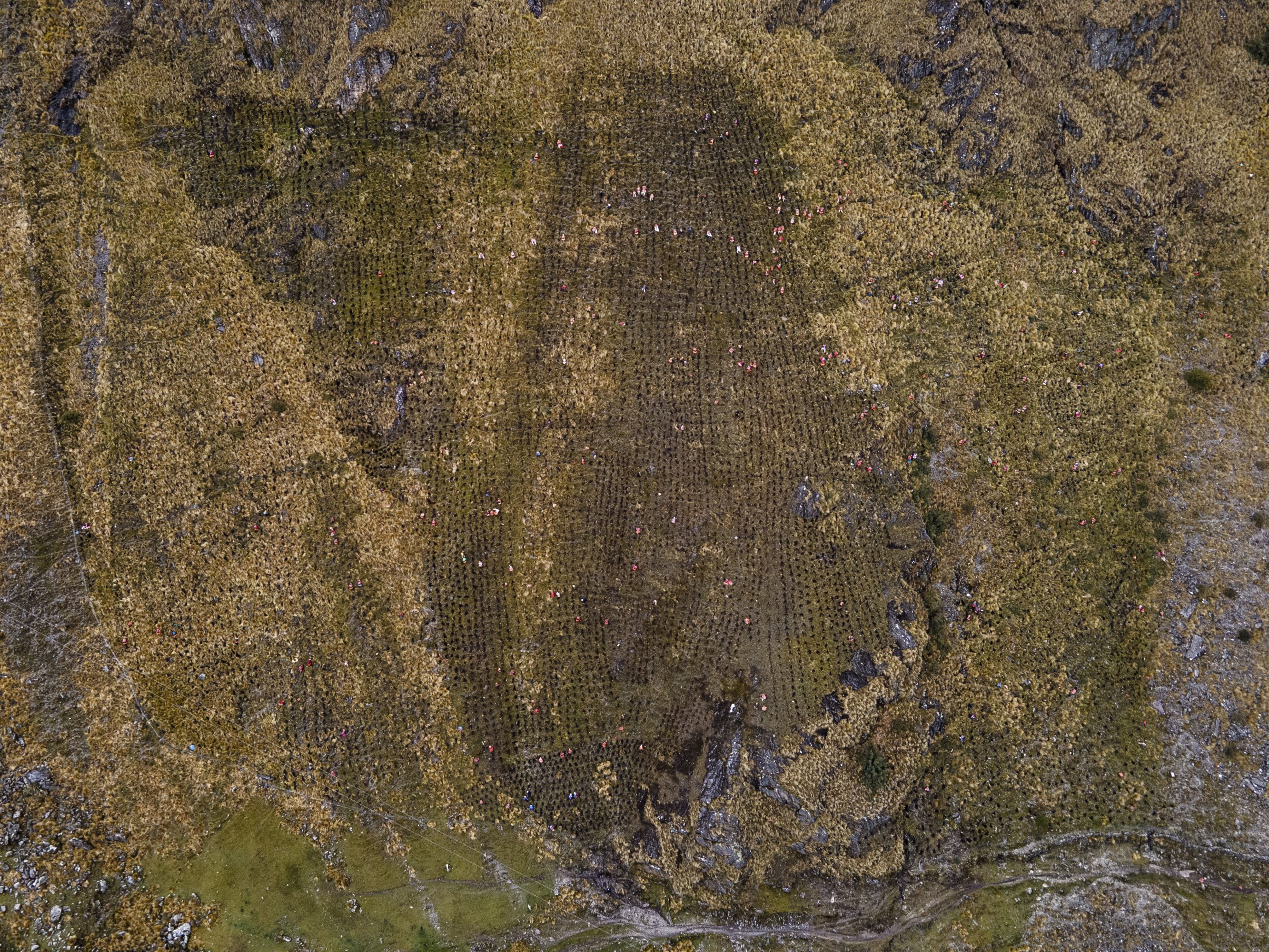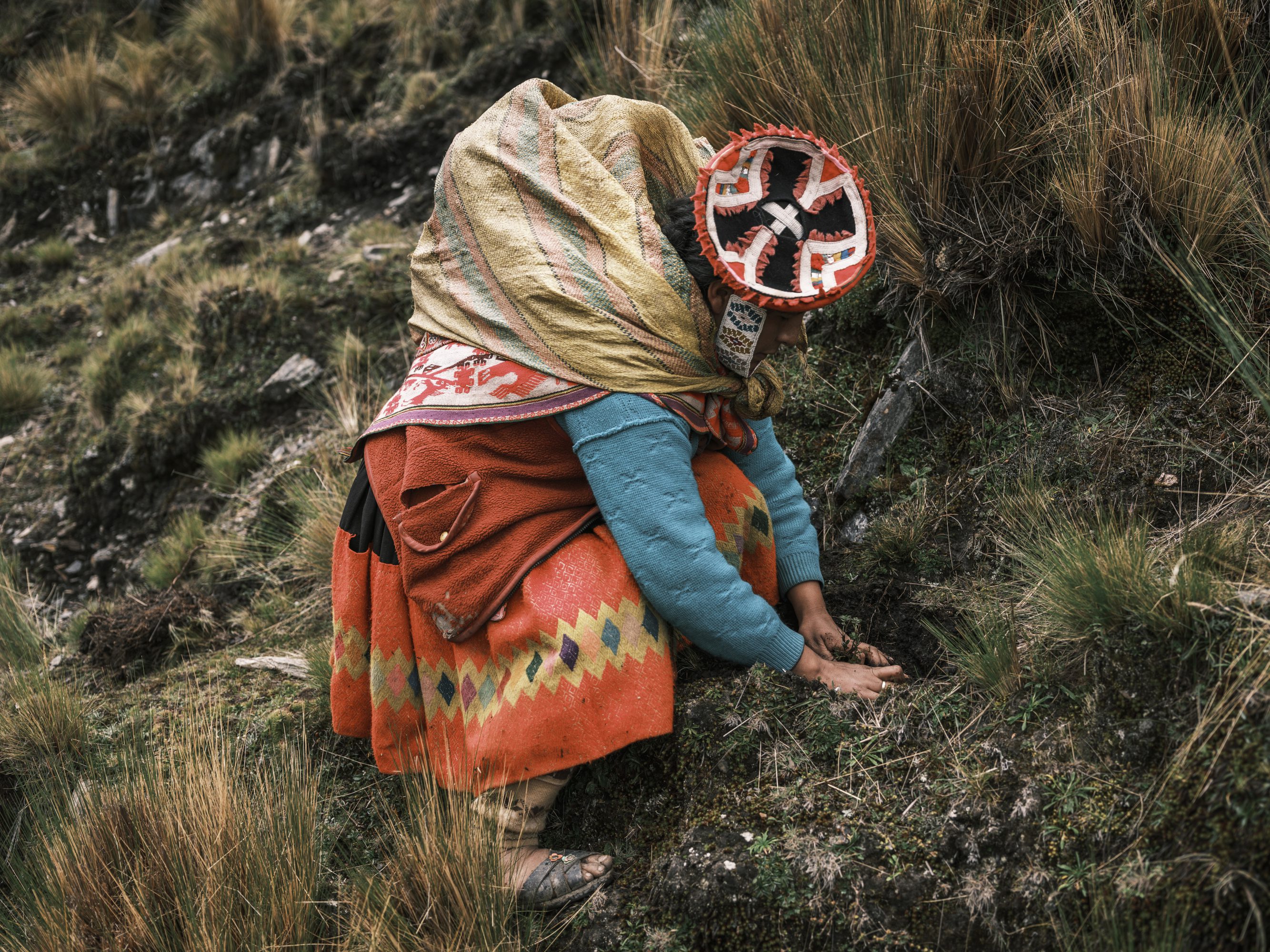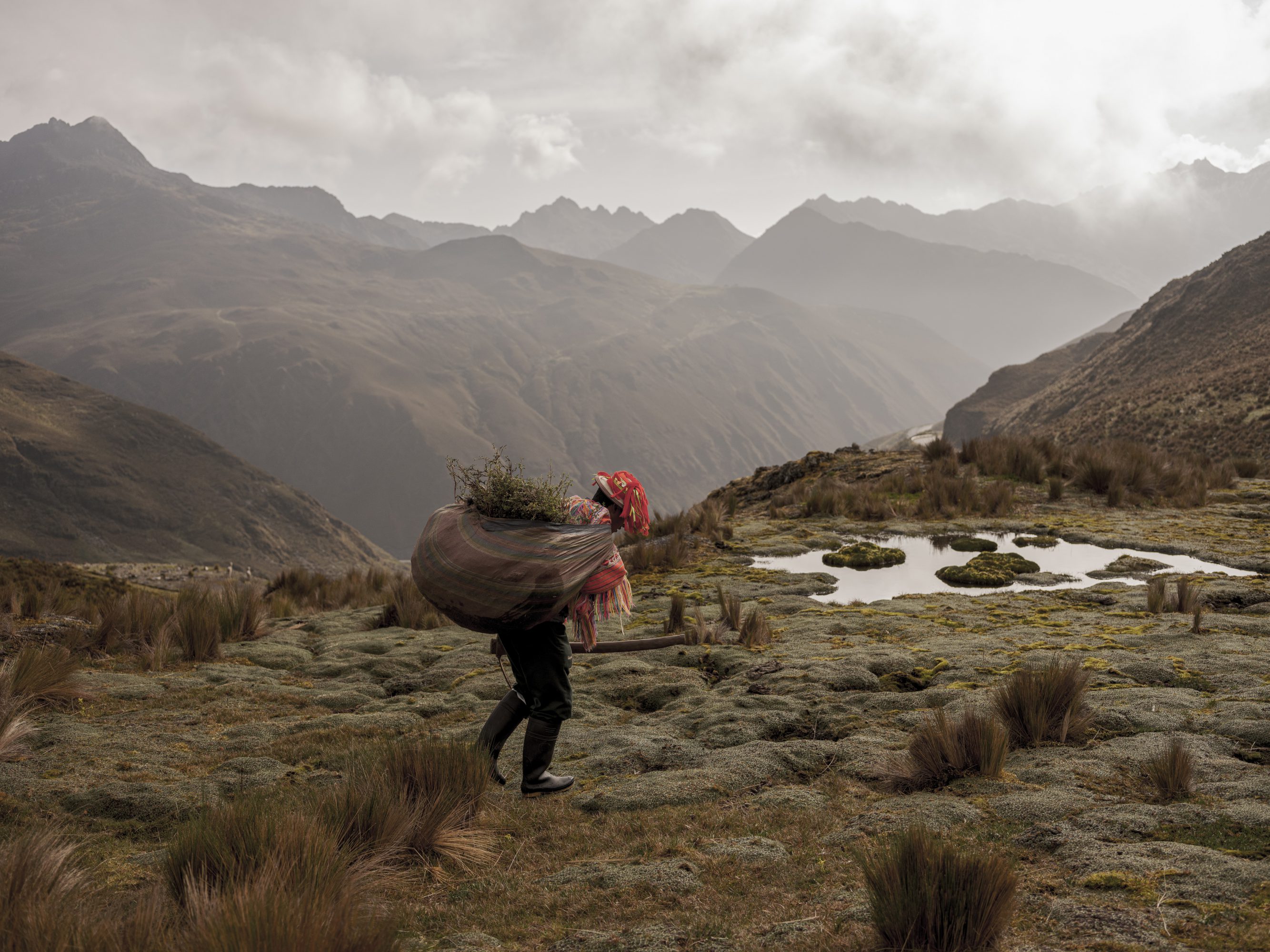Peru is eighth on the list of countries with the most water, but the capital Lima is located in a coastal desert where a third of the population live and over a million people have no access to drinking water. Collecting and storing water is a daily challenge to many living in the capital.
Even higher up in the mountains where there is no lack of water there has always been an understanding that water sources should only be exploited sustainably.
The Incas, the ancestors of the Quechua people - the indigenous people of the Andes - literally ‘sowed’ water for harvesting later. They did so by digging qochas (large ponds) in the soil of the Andean mountains during the rainy season between December and March. The qochas would gradually fill with water that would be slowly filtered and reach the lower lands where they grew their crops. Their understanding of agriculture and irrigation was sophisticated. But the ‘sowing’ of water had a simple premise: water is born in the heights and bathes the world as it descends into streams, rivers and lagoons.
Residents of the Quelcancca community return carrying the flag of Peru from one of the headwaters where they planted 23,000 seedlings of Queuna trees of the Polylepis pauta, Polylepis subsericans, and Polylepis pepei species, with the aim of restoring the Andean ecosystem.
A resident of Patacancha carries a bundle of Quenual to the summit of a mountain to be planted.
The current descendants of the Incas renewed the practice of digging qochas a few years ago and complemented it with the planting of Queñuas, native trees of the high Andes. The trees are fast growing, resistant to the cold winters and adapted to survive up to an altitude of 4500 metres above sea level and play an important role in the mountain ecosystem regulating the climate, preventing erosion, and crucially storing and filtering the water that feeds the springs. Traditionally they are used to feed animals and to provide timber for roofing, fuel and charcoal which has led to significant deforestation. According to some estimates Andean forests currently occupy between 5 and 10% of their original area.
The villagers of Patacancha carry bundles of Quenual trees on llamas and alpacas, which they will later plant in the highlands of the village at an altitude of over 4800 metres above sea level.
To encourage queñuas planting the Andean Ecosystems Associatioin (ECOAN) built on the Inca practice of Ayni or Minka, which promoted collective work for the common good. They proposed the idea of planting the trees during festivals and initiated the Queñua Raymi Festival organised around a tree planting campaign..
The initiative, according to Constantino Auccal biologist and president of ECOAN, was born out of the frustration derived from the low impact of many actions against climate change. (Andean forests are very vulnerable to climate change) He and his collaborators other biologists, foresters and ecologists understood that they did not have to invent anything new. The practice of planting water already existed, and they could take advantage of it to restore high Andean ecosytems by planting queñuas.
A child from the community of Abra Malaga gathers a bundle of Quenual shrubs to carry them up to the mountaintop where they will be planted.
Planting of Quenual in the community of Abra Malaga.
A Quenual bush in the highlands of the community of Patacancha. Since ancient times, this native plant has played a crucial role in protecting the headwaters of watersheds and providing a habitat for the biodiversity of Andean forests and wetlands. The quenual, also known as quinual or quewina (from the Quechua word 'qiwina'), is one of the few tree species that is highly resistant to cold temperatures in the world. Studies reveal that certain families of this species can thrive at altitudes above 5,200 metres above sea level.
In the community of Quelcanca, the orchards are located near the wetlands and streams that flow down from the high areas in the headwaters of the watershed.
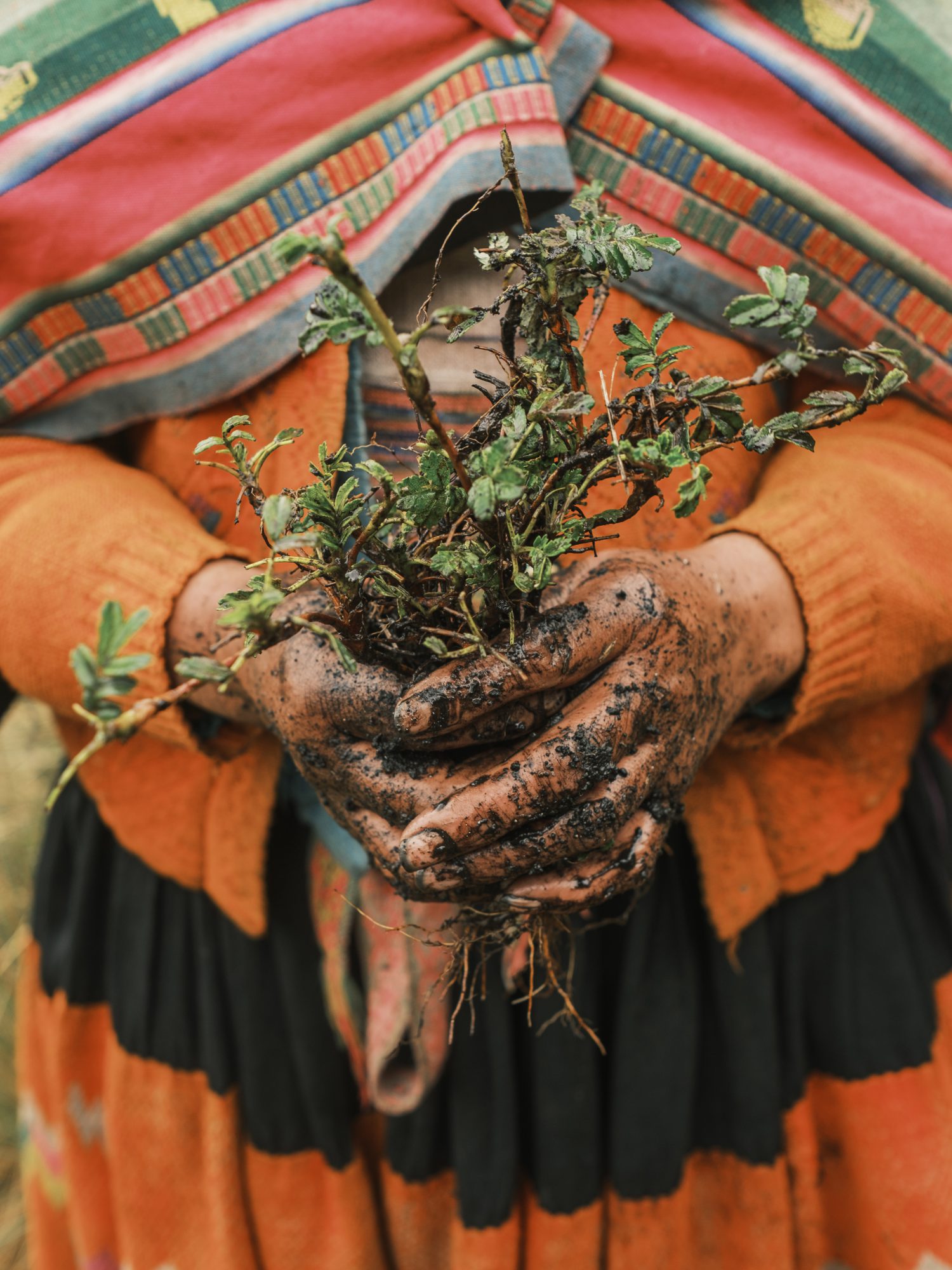
A woman from the community of Quelcanca holds a Quenual bush before it is planted.
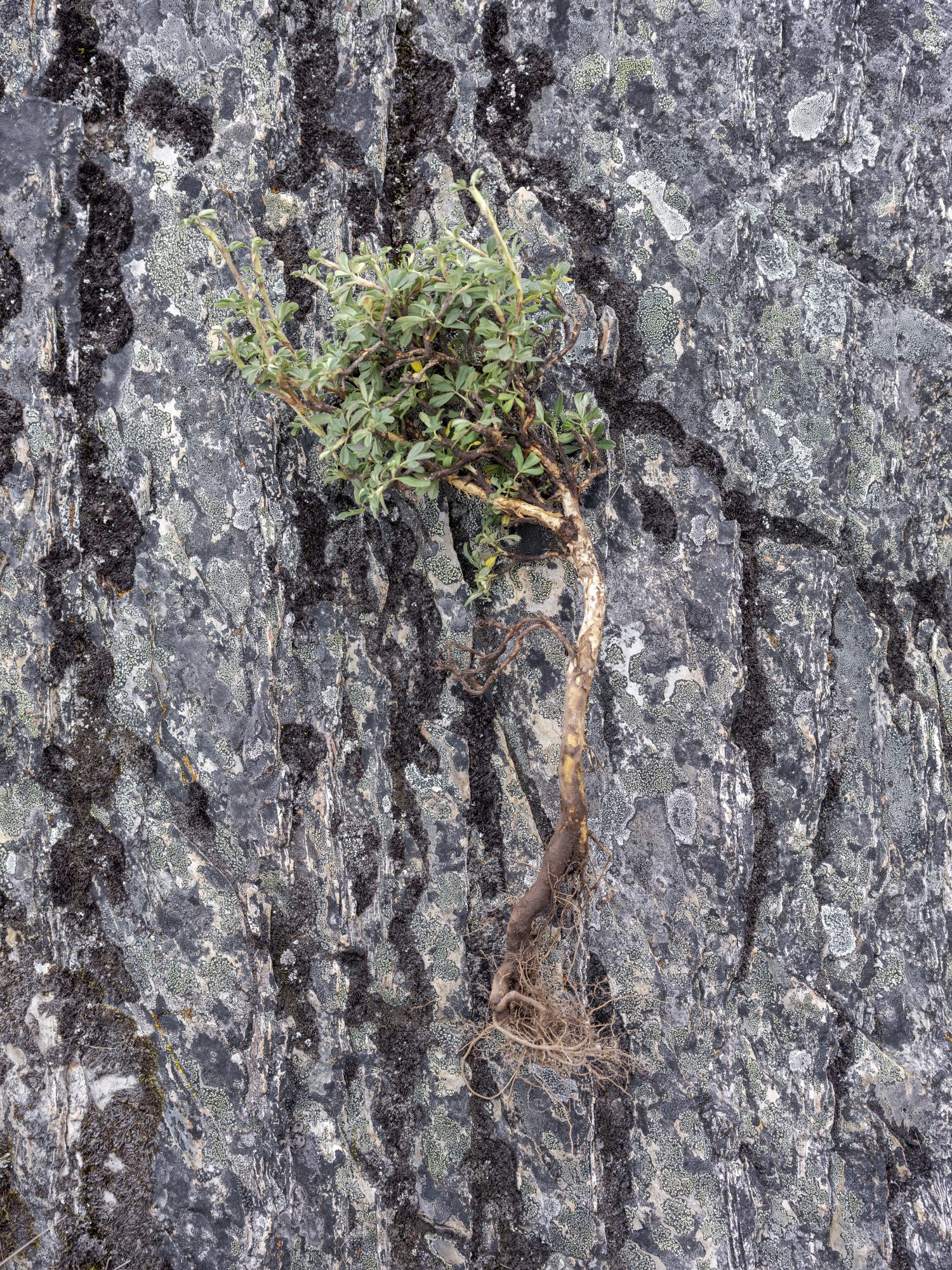
A small Quenual shrub is being transplanted in one of the high areas of the village of Quelcannca.
A group of musicians from the community of Quelcanca accompanies the planting of Quenual trees in one of the headwaters, a three hour walk from the village. During the Quenual Raimy, various cultural expressions typical of the communities in the Vilcanota river basins can be observed. Their traditional garments, music, and dances accompany the planting task.
The communities involved organise themselves to collect seedlings and grow them in community nurseries, producing around 100,000 seedlings a year. They then distribute the plants and pay a daily rate to the planters. During the Queñua Raymi festival the communities of the Cusco region plant tens of thousands of seedlings in a day in a celebration that strengthens their identity and promotes a more sustainable relationship with the environment for communities that depend on the soil for their livelihood
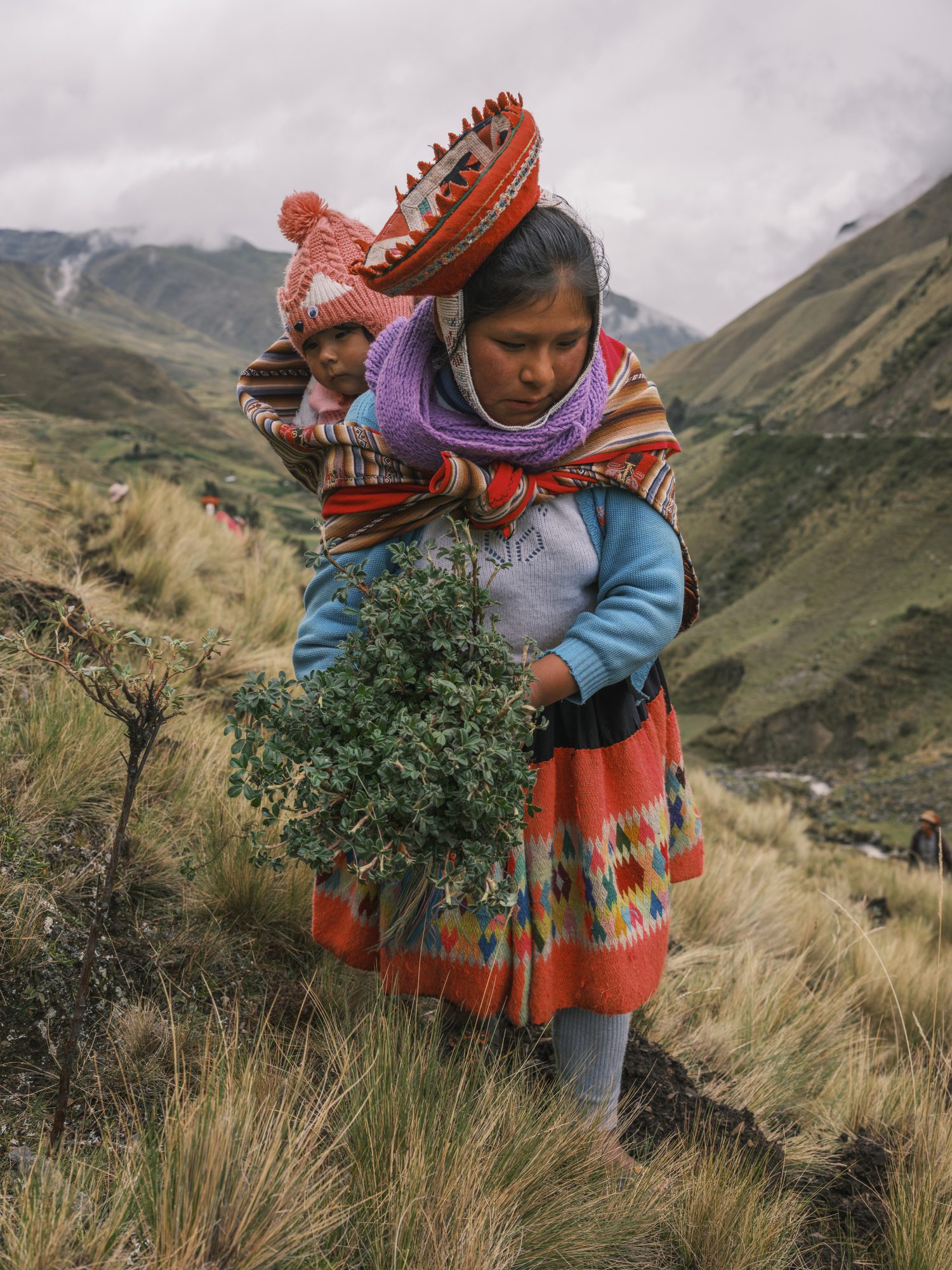
During the planting of Quenual in the community of Patacancha, the participation of the entire village is evident. Even mothers carry their babies in traditional 'lliqllas' during the planting work.
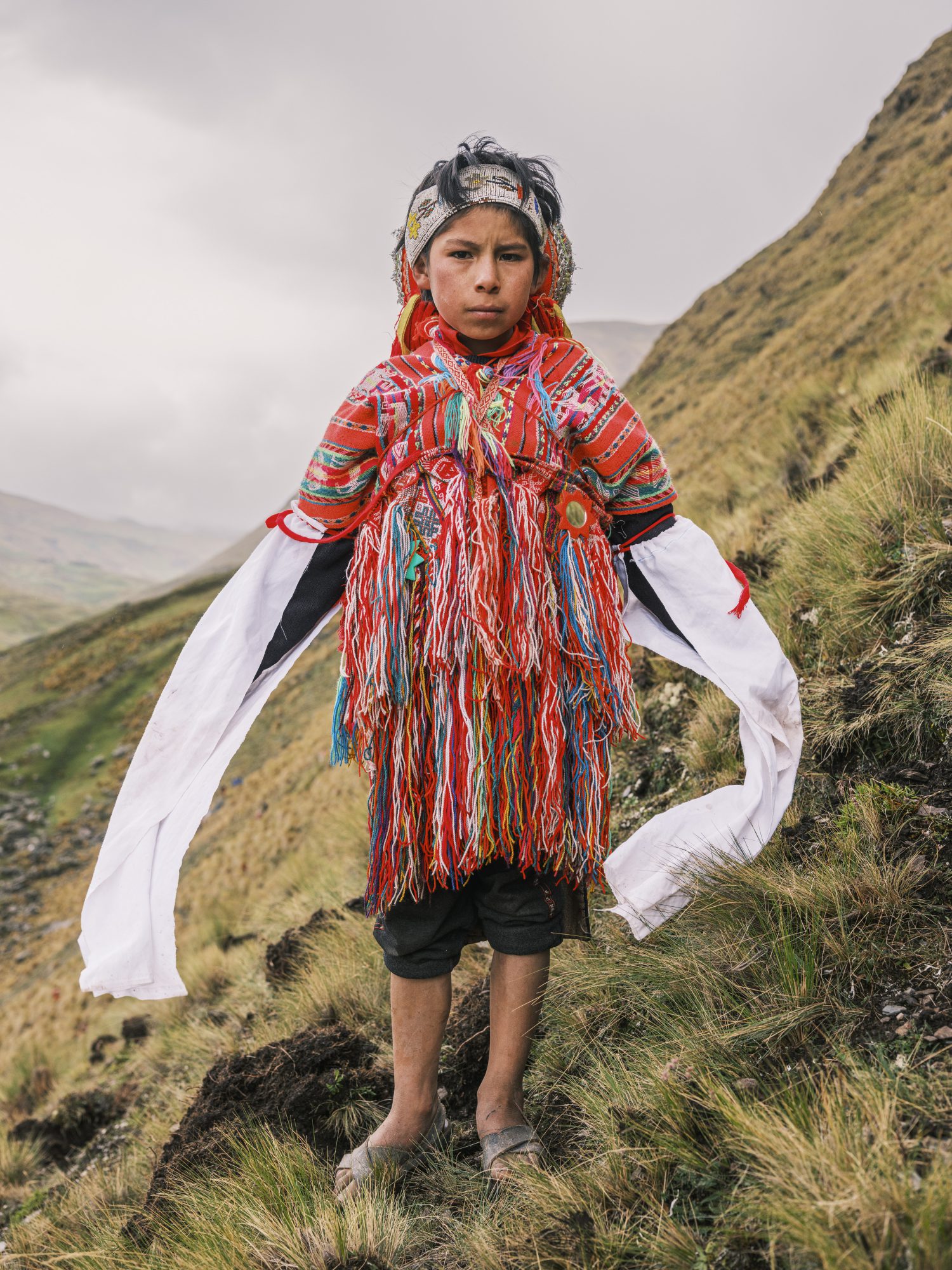
Reinaldo, a 13-year-old boy, is dressed as a Huallata, a bird that lives near rivers and is believed to be a sign of a good planting season. Some members of the community accompany the planting with dances representing this bird as a ritual for a successful agricultural year.
In the community of Quelcanca, one can witness the interaction of water that flows from the snowy mountains and forms wetlands. This ecosystem is benefited by the planting of Quenual trees, which helps water infiltration into the subsoil.
A group of residents from the community of Patacancha perform a ritual offering to the land using coca leaves. The coca leaf plays a fundamental and sacred role in the ancestral beliefs of the Andean world. The residents use it to ask questions about the good harvest season, the rains, the right time for planting, among other aspects. Additionally, it is one of the main resources used during the strenuous planting tasks, providing energy and helping to alleviate hunger, among other benefits.
Residents from the village of Patacancha planting Quenual trees on the slopes of a mountain a few kilometres away from their village during the rainy season.
Woman from the community of Patacancha share a jug of 'chicha', a fermented beverage made from corn, during the planting of Quenual bushes. This collectively performed practice reinforces their cultural identity, promotes a sustainable relationship with the environment, and puts into practice knowledge passed down through generations.
The entire community of Abra Malaga attends the planting of Quenual trees in the highlands of a mountain, near one of the highest passes in the mountain range.
Aerial image of the Quenual tree planting operation in the community of Patacancha.
A woman planting a Quenual bush.
A settler from Abra Malaga transports a bundle of Quenual to the summit of a mountain. The picture showcases the intermediate scenery, where wetlands play a crucial role in the water sustainability of the communities.
A snow-capped peak covered by fog at the Abra Malaga pass.

